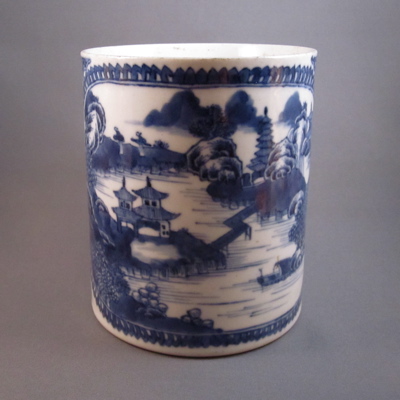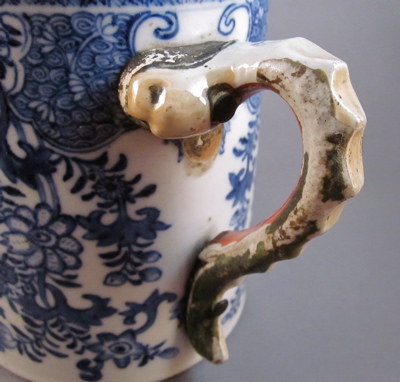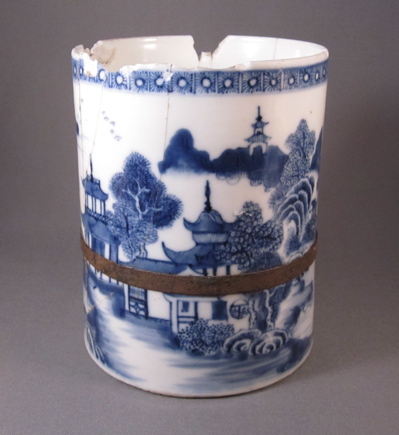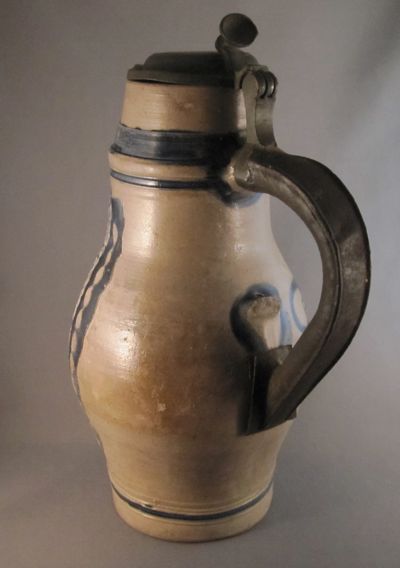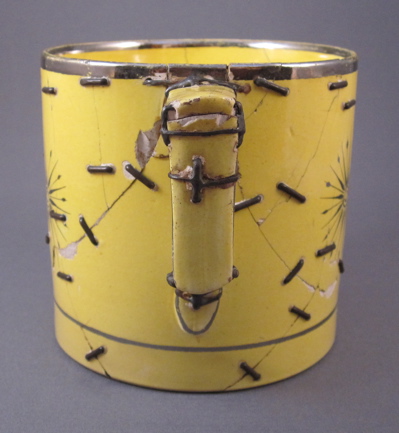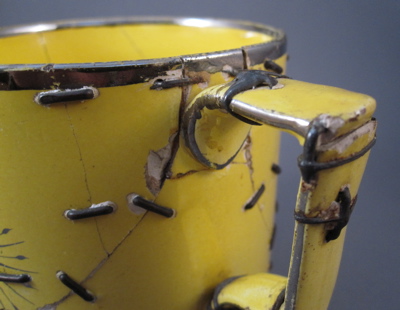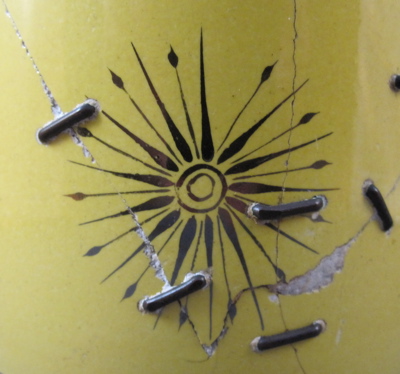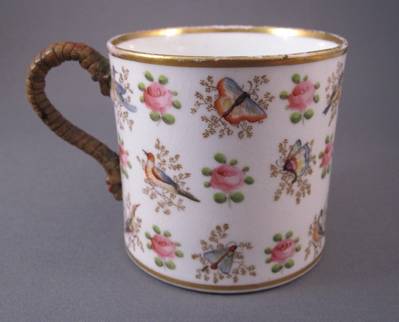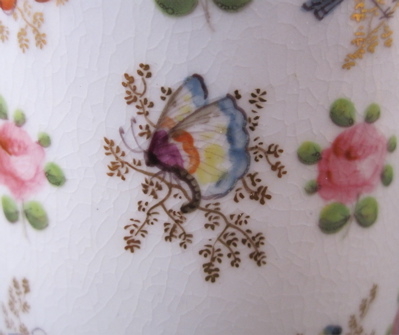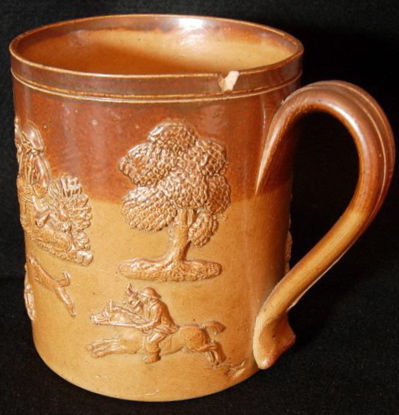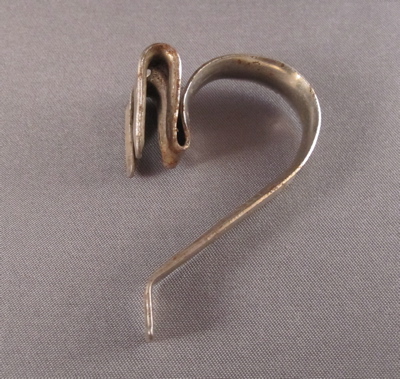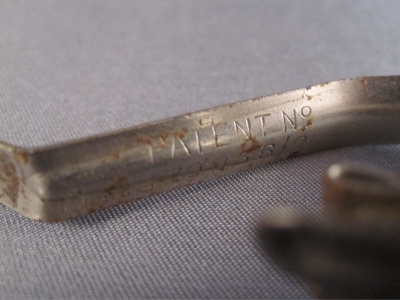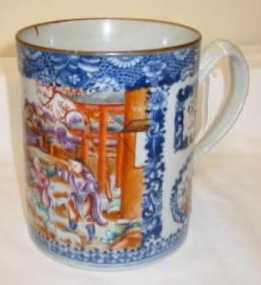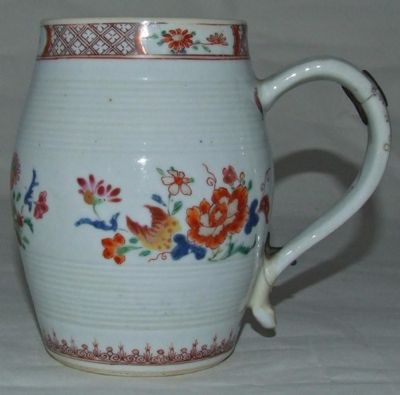This is the story of a forced marriage between an 18th century Chinese porcelain mug and a 19th century English pottery jug, joined together by a mad tinker to live out the rest of their lives as one. The Qianlong period (1736-1795) mug with cobalt blue underglaze design stands 5-1/8″ high. The original handle, most likely in the form of a dragon, broke off sometime in the early 1800s. I imagine a clever repairer (or Dr. Frankenstein?) found a damaged English stoneware pottery jug, skillfully removed the intact snake-shaped handle and, using two metal rivets, reattached it to the body of a Chinese tankard…creating a hybrid Anglo-Asian monster mug!
This is what the original dragon handle on my Chinese mug would have looked like before it broke off. Photo courtesy of Ruby Lane
And this Mason’s Ironstone “Hydra” jug, made in Staffordshire, c.1830, shows the serpent handle intact. Photo courtesy of Selling Antiques

